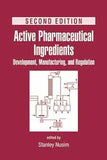Heterocyclic chemistry comprises at least half of all organic chemistry research worldwide. In particular, the vast majority of organic work done in the pharmaceutical and agrochemical industries is heterocyclic chemistry.
The fifth edition of Heterocyclic Chemistry maintains the principal objective of earlier editions – to teach the fundamentals of heterocyclic reactivity and synthesis in a way that is understandable to second- and third-year undergraduate chemistry students. The inclusion of more advanced and current material also makes the book a valuable reference text for postgraduate taught courses, postgraduate researchers, and chemists at all levels working with heterocyclic compounds in industry.
Fully updated and expanded to reflect important 21st century advances, the fifth edition of this classic text includes the following innovations:
- Extensive use of colour to highlight changes in structure and bonding during reactions
- Entirely new chapters on organometallic heterocyclic chemistry, heterocyclic natural products, especially in biochemical processes, and heterocycles in medicine
- New sections focusing on heterocyclic fluorine compounds, isotopically labeled heterocycles, and solid-phase chemistry, microwave heating and flow reactors in the heterocyclic context
Essential teaching material in the early chapters is followed by short chapters throughout the text which capture the essence of heterocyclic reactivity in concise resumés suitable as introductions or summaries, for example for examination preparation. Detailed, systematic discussions cover the reactivity and synthesis of all the important heterocyclic systems. Original references and references to reviews are given throughout the text, vital for postgraduate teaching and for research scientists. Problems, divided into straightforward revision exercises, and more challenging questions (with solutions available online), help the reader to understand and apply the principles of heterocyclic reactivity and synthesis.
Definitions of abbreviations
1. Heterocyclic nomenclature
2. Structures and spectroscopic properties of aromatic heterocycles
3. Substitutions of aromatic heterocycles
4. Organometallic heterocyclic chemistry
5. Methods in heterocyclic chemistry
6. Ring synthesis of aromatic heterocycles
7. Typical reactivity of pyridines, quinolines and isoquinolines
8. Pyridines: reactions and synthesis
9. Quinolines and isoquinolines: reactions and synthesis
10. Typical reactivity of pyrylium and benzopyrylium ions, pyrones and benzopyrones
11. Pyryliums, 2- and 4-pyrones: reactions and synthesis
12. Benzopyryliums, benzopyrones: reactions and synthesis
13. Typical reactivity of the diazines: pyridazine, pyrimidine and pyrazine
14. The diazines: pyridazine, pyrimidine, and pyrazine: reactions and synthesis
15. Typical reactivity of pyrroles, thiophenes, and furans
16. Pyrroles: reactions and synthesis
17. Thiophenes: reactions and synthesis
18. Furans: reactions and synthesis
19. Typical reactivity of indoles, benzo[b]thiophenes, benzo[b]furans, isoindoles, benzo[c]thiophenes and isobenzofurans
20. Indoles: reactions and synthesis
21. Benzo[b]thiophenes and benzo[b]furans: reactions and synthesis
22. Isoindoles, benzo[c]thiophenes and isobenzofurans: reactions and synthesis
23. Typical reactivity of 1,3- and 1,2-azoles and benzo-1,3- and -1,2-azoles
24. 1,3-Azoles: imidazoles, thiazoles, and oxazoles: reactions and synthesis
25. 1,2-Azoles: pyrazoles, isothiazoles, isoxazoles: reactions and synthesis
26. Benzanellated azoles: reactions and synthesis
27. Purines: reactions and synthesis
28. Heterocycles containing a ring-junction nitrogen (bridgehead compounds)
29. Heterocycles containing more than two heteroatoms
30. Saturated and partially unsaturated heterocyclic compounds: reactions and synthesis
31. Special topics
32. Heterocycles in biochemistry; heterocyclic natural products
33. Heterocycles in medicine
Keith Mills spent 25 years in the Medicinal Chemistry and Development Chemistry departments at GlaxoSmithKline, Stevenage, UK, and is now an independent consultant.
- The authors have thoroughly reviewed the material included in the earlier Editions, to make amendments in the light of new knowledge, and to include many important 21st Century advances
- Entirely, new sections include ‘Organometallic heterocyclic chemistry’, ‘Heterocycles in medicine’, reflecting the large part that heterocyclic chemistry plays in the pharmaceutical industry, and ‘Heterocycles in biochemistry; heterocyclic natural products’.
- Also included are new sections dealing explicitly with a number of topics important in the heterocyclic context: (i) heterocyclic fluorine compounds, (ii) isotopically labeled heterocycles, and (iii) the modern techniques of solid-phase chemistry, microwave heating and flow reactors.
- Two colour diagrams indicate where a change in structure or bonding has taken place, facilitating comprehension and understanding of the chemical changes that are occurring.


















